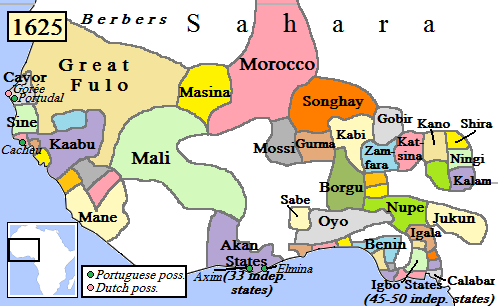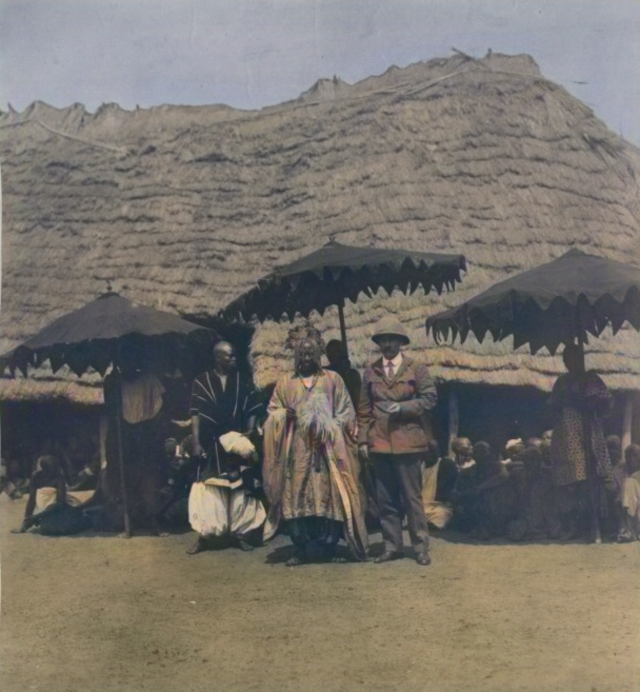|
Eguguojo
Eguguojo (also known as Egunoju) was the Alaafin of Oyo during the sixteenth century. It was during his reign that the capital city was moved from Oyo ile to Oyo Igboho (New Oyo), after a protracted battle with the Nupes and also as a result of internal fighting. Prior to the establishment of New Oyo, his grandfather had gone on an odyssey from Oyo ile to escape threats from palace officials. He was succeeded on the throne by his sister Orompoto Orompoto (also spelled Oronpoto) was an Alaafin of the Yoruba Oyo Empire. The empire of which she ruled is located in what is modern day western and north-central Nigeria. History Orompoto was the sister of her predecessor, Eguguojo. She became th .... References Alaafins of Oyo 16th-century monarchs in Africa 16th-century Nigerian people {{Alaafins of Oyo ... [...More Info...] [...Related Items...] OR: [Wikipedia] [Google] [Baidu] |
Oyo Empire
The Oyo Empire was a powerful Yoruba empire of West Africa made up of parts of present-day eastern Benin and western Nigeria (including Southwest zone and the western half of Northcentral zone). It grew to become the largest Yoruba-speaking state and rose through the outstanding organizational and administrative skills of the Yoruba people, wealth gained from trade, and a powerful cavalry. The Oyo Empire was one of the most politically important states in the entirety of Western Africa from the mid-17th to the late 18th century, and held sway not only over most of the other kingdoms in Yorubaland, but also over nearby African states, notably the Fon Kingdom of Dahomey in the modern Republic of Benin on its west. History Legend of origin The origins of the Oyo Empire lie with Oranyan (also known as Oranmiyan), the last prince of the Yoruba Kingdom of Ile-Ife ( Ife). Oranmiyan made an agreement with his brother to launch a punitive raid on their northern neighbors for i ... [...More Info...] [...Related Items...] OR: [Wikipedia] [Google] [Baidu] |
Orompoto
Orompoto (also spelled Oronpoto) was an Alaafin of the Yoruba Oyo Empire. The empire of which she ruled is located in what is modern day western and north-central Nigeria. History Orompoto was the sister of her predecessor, Eguguojo. She became the first woman to become "king" of the Oyo in the imperial era, and the first woman since the pre-imperial ruler Yeyeori. Orompoto assumed the throne because there was no male successor within her family at the time. She helped drive the Nupe from Oyo in 1555. Orompoto lived in the 16th century. Orompto was the second Oyo monarch to reign in the new capital of Igboho. Some traditions of the oral record hold that she was miraculously transformed into a man before assuming the throne there. Orompoto used horses extensively in military battles and may have obtained them from Borgu. She was reportedly masterfully skilled on horseback, and created a specialized order of cavalry officers within her army that were subject to the Eso Ikoyi. The ... [...More Info...] [...Related Items...] OR: [Wikipedia] [Google] [Baidu] |
Alaafin
Alaafin, or ''The Owner of the Palace'' in the Yoruba language, is the title of the emperor of the medieval Oyo empire and present-day Oyo town of West Africa. He ruled the old Oyo Empire which extended from the present day Benin republic to Nigeria originating from states in the South East and West to the North. The people under him are called Yoruba people and spoke the Yoruba Language. The Alaafin of Oyo in Yoruba mythology and history is said to be one of Oduduwa seven grandsons who later became Kings, forming the bedrock of the Yoruba Civilization /sup> . The title was retained after the fall of the Oyo Empire as the official title of the ceremonial ruler of the contemporary natives of Oyo, Nigeria. The Alaafin is the political head of the Yoruba people and the only monarch with the pre-requisite power to appoint a chieftain representing the entire Yorubaland Yorubaland () is the homeland and cultural region of the Yoruba people in West Africa. It spans the modern-d ... [...More Info...] [...Related Items...] OR: [Wikipedia] [Google] [Baidu] |
Capital City
A capital city or capital is the municipality holding primary status in a country, state, province, department, or other subnational entity, usually as its seat of the government. A capital is typically a city that physically encompasses the government's offices and meeting places; the status as capital is often designated by its law or constitution. In some jurisdictions, including several countries, different branches of government are in different settlements. In some cases, a distinction is made between the official ( constitutional) capital and the seat of government, which is in another place. English-language news media often use the name of the capital city as an alternative name for the government of the country of which it is the capital, as a form of metonymy. For example, "relations between Washington and London" refer to " relations between the United States and the United Kingdom". Terminology and etymology The word ''capital'' derives from the Latin ... [...More Info...] [...Related Items...] OR: [Wikipedia] [Google] [Baidu] |
Nupe People
The Nupe (traditionally called the ''Nupawa'' by the Hausas and ''Tapa'' by the neighbouring Yoruba) are an ethnic group native to the Middle Belt of Nigeria. They are the dominant ethnic group in Niger State and a minority in Kwara State. The Nupe are also present in Kogi State and The Federal Capital Territory. History The Nupe trace their origin to Tsoede who fled the court of Idah and established a loose confederation of towns along the Niger in the 15th century. The proximity of Nupe to the Yoruba Igbomina people in the south and to the Yoruba Oyo people in the southwest led to cross-fertilization of cultural influences through trade and conflicts over the centuries. Population and demography There are probably about 3.5 million Nupes, principally in Niger State. The Nupe language is also spoken in Kwara, Kogi and Federal Capital Territory. They are primarily Muslims, with some Christians and followers of African Traditional Religion. The nupe people have seve ... [...More Info...] [...Related Items...] OR: [Wikipedia] [Google] [Baidu] |
16th-century Monarchs In Africa
The 16th century begins with the Julian year 1501 ( MDI) and ends with either the Julian or the Gregorian year 1600 ( MDC) (depending on the reckoning used; the Gregorian calendar introduced a lapse of 10 days in October 1582). The 16th century is regarded by historians as the century which saw the rise of Western civilization and the Islamic gunpowder empires. The Renaissance in Italy and Europe saw the emergence of important artists, authors and scientists, and led to the foundation of important subjects which include accounting and political science. Copernicus proposed the heliocentric universe, which was met with strong resistance, and Tycho Brahe refuted the theory of celestial spheres through observational measurement of the 1572 appearance of a Milky Way supernova. These events directly challenged the long-held notion of an immutable universe supported by Ptolemy and Aristotle, and led to major revolutions in astronomy and science. Galileo Galilei became a champion ... [...More Info...] [...Related Items...] OR: [Wikipedia] [Google] [Baidu] |




